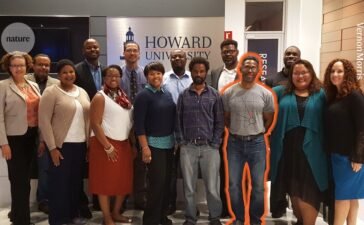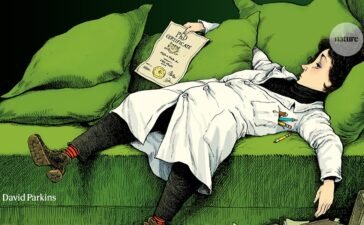
Cave-bat fieldwork often looked like a scene from the 1995 film Outbreak.Credit: Warner Bros/AJ Pics/Alamy
For years, I was a bat ecologist, fully immersed in the grind of data collection and publications. My research on cave-bat conservation took me to remote locations, crawling through caves knee-deep in guano, catching bats. Back then, taking photos felt like a distraction from my research.
But two years ago, I left the academic world for a career as a science communicator at the GENUS hub at the University of the Witwatersrand, Johannesburg, in South Africa. Today, I work alongside researchers, helping them to bring their science to life through compelling stories. Visuals, particularly photographs, are a key part of this work.
Looking back, I wish I’d captured more of my field experiences. Photos are priceless tools for public engagement, yet many researchers fail to see their value. Now, I understand that science doesn’t just live in publications — it lives in stories, visuals and the personal connections that we create with people.
Pics, or it didn’t happen
During my postdoctoral position in ecology and viral zoonosis at the University of Pretoria, South Africa, my team and I worked mainly in a rural part of Limpopo, on the northeastern side of South Africa, in a small village called Ga-Mafefe. The landscape was lush and green, dotted with ancient fig trees and alive with the rhythm of daily life.
Photography: Science on camera
Within minutes of arriving at the cave site at the base of a steep hill, my team from the Centre for Viral Zoonoses would transform a patch of wilderness into a fully functioning research station, complete with a working centrifuge, powered by portable car batteries. We would dress head-to-toe in white, crinkly Tyvek suits (a type of lightweight, protective, plastic onesie that could shield both us and the bats from contaminants). With respirators humming, we looked like something straight out of the 1995 medical-disaster movie Outbreak.
For a week every month, this was my reality. I’d catch bats with specialized traps, and then spend hours hunched over folding camping tables carefully measuring the animals and collecting biological samples. Summer nights were sweltering, with sweat pooling in our suits; meanwhile, winters had us shivering, our noses running faster than we could wipe them, although wiping wasn’t exactly an option. It was exhausting, repetitive and, at times, comically miserable — but it was also exhilarating. We were a well-oiled machine, driven by a shared passion and the late-night humour that only a sleep-deprived team in the middle of nowhere could understand.
Then in 2022, I did a three-month science-storytelling fellowship with the Nature, Environment and Wildlife Filmmakers — an organization that aims to build a network of visual storytellers, led by Indigenous African voices, celebrating and protecting Africa’s natural history — and it completely changed my perspective. I rediscovered my creative side and came to understand that scientific exchange can take many forms beyond just research papers. Armed with this newfound inspiration, I started taking photographs of everything during our fieldwork, capturing the beauty and intensity of our work.

Mariëtte van der Walt back in her bat-fieldwork days.Credit: Mariette van der Walt
Back home in Johannesburg, my family and friends were captivated by the stories my photos told. Through my lens, they saw breathtaking landscapes, rough conditions and, of course, cute bats. I felt like my work could connect with people in a way data alone never could.
With this perspective, I realized that as much as I loved my research, my postdoctoral studies weren’t the right place to pursue my newfound passion for storytelling. I decided to leave academia and embrace a career in science communication.
Ecologists: don’t lose touch with the joy of fieldwork
You Might Also Like
The Nature Podcast highlights of 2025
You have full access to this article via your institution. Download the Nature Podcast 24 December 2025In this episode:00:40 What...
Seeding opportunities for Black atmospheric scientists
Vernon Morris (outlined) with alumni from the atmospheric sciences PhD programme he established at Howard University in Washington DC.Credit: Vernon...
peer reviews created using AI can avoid detection
The difficulty of detecting AI-tool use in peer review is proving problematic.Credit: BrianAJackson/iStock via GettyIt’s almost impossible to know whether...
I’ve earned my PhD — what now?
Illustration: David ParkinsThe problemDear Nature,In December 2024, I finished my PhD in biomedical chemistry in Italy, and I now find...












